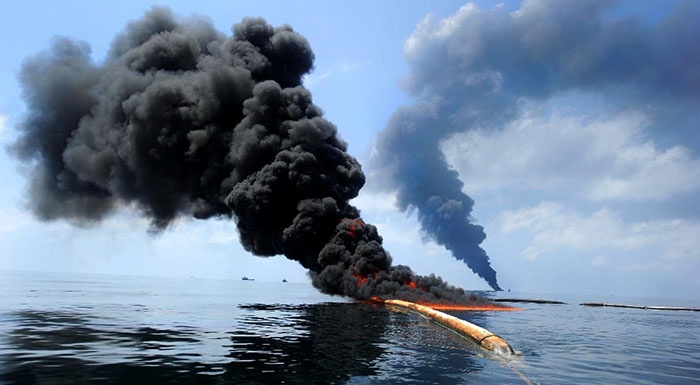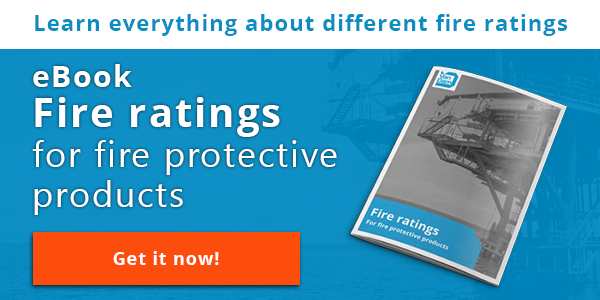
The most commonly used fire curves within the fire protective products industry are the cellulosic and hydrocarbon fire curves. The cellulosic fire curve has been used for many years before the hydrocarbon fire curve was developed. The need for the hydrocarbon curve became apparent when it was clear that the burning rates of material like plastics, wood, paper, cotton or textiles did not match the burning rate of compounds like petrol and chemicals, which was significantly higher.
Fire and blast protective products are divided into two categories of fire protection based on these fire curves. Products that provide protection against cellulosic fire receive a fire rating of “A”, “B” and “F”. Products rated according to the hydrocarbon fire curve receive the fire rating “H” or “J”. “J” ratings are again based on a specific type of hydrocarbon fire which is also known as jet fire.
Flame temperature
The standard fire curve of a cellulosic fire reaches 500°C (932°F) within 5 minutes and rises to 945°C (1733°F) over time. Hydrocarbon fire, or pool fire, is a fire fueled by hydrocarbon compounds (oil and gas), having a high flame temperature to 1000°C (1832°F) within 5 minutes, achieved almost instantaneously after ignition. The heat rises to 1100°C (2012°F) shortly thereafter.
These statistics show that the flame temperature of a hydrocarbon fire is twice as high as the flame temperature of a cellulosic fire. Therefore, a fire event fueled by hydrocarbons is more dangerous for people and equipment than cellulosic fire.
Fire integrity
Fire integrity is the basic fire-resisting ability of a product to remain intact during a specified period. For cellulosic fire protective products, the fire integrity must be 30 minutes for “B” fire rated products and 60 minutes for “A” fire rated products. For hydrocarbon fire protective products this is different. “H” fire rated products need to have a fire integrity of 120 minutes, which is much more than “A” or “B” fire rated products.
Insulation
The most commonly applied insulation material for fire and blast protective products is mineral wool. In the risk of hydrocarbon fires, that are more severe than cellulosic ones, the application of thicker insulation material is recommended. Applying a few layers of mineral wool helps to achieve the necessary requirement for hydrocarbon fire protection.
Conclusion
Hydrocarbon fires present more risks for people and equipment than cellulosic fires. When deciding upon which product you want for your project you must first decide which type of fire will be a threat for you structure or building. Each product will be rated accordingly. Hydrocarbon fire protective products generally have a thicker insulation than cellulosic fire protective products in order to ensure the required resistance against this type of fire.
Want to know more about the different types of fire and fire ratings? Download our eBook about fire ratings for fire protective products.







